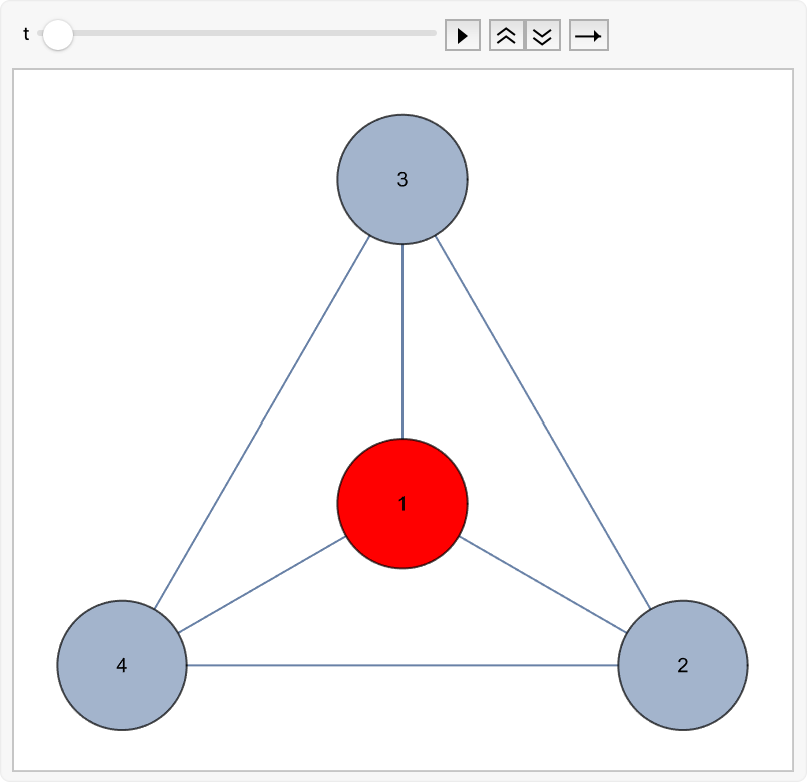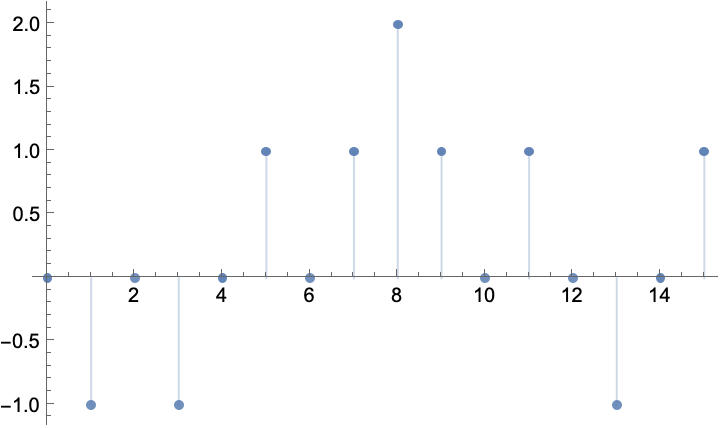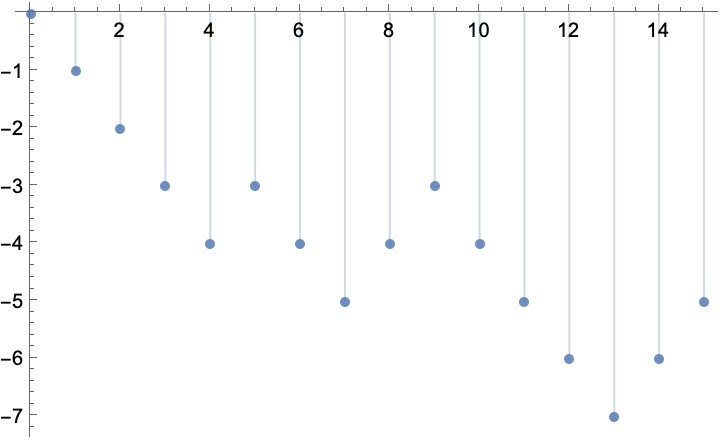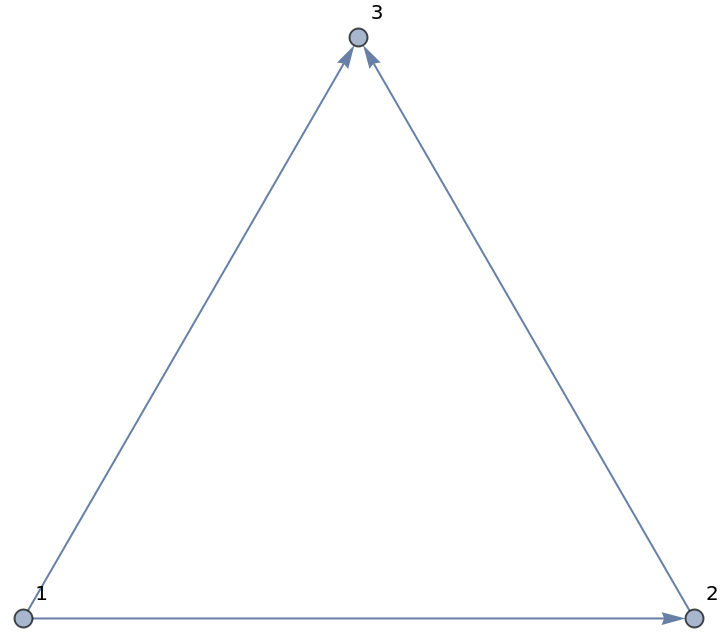Basic Examples (2)
Create a discrete time random walk on a cycle graph with unit weight on each edge, starting at vertex 1 and lasting ten steps:
Extract the walk, which is a list where each element is a pair of the form {t,v}, representing a move to the vertex v at time t:
Animate this walk:
Create a continuous time random walk on the Petersen graph with unit weight on each edge, starting at vertex 1 and lasting from time t=0 to t=10:
Extract the walk, which is a list where each element is a pair of the form {t,v}, representing a move to the vertex v at time t:
Animate this walk:
Options (2)
Create a weighted graph:
Create five discrete time random walks on the graph, each starting at vertex 1 and lasting ten steps:
Extract the first of these walks, a list where each element is a pair of the form {t,v}, representing a move to the vertex v at time t:
Animate this walk:
Create a weighted graph:
Create five continuous time random walks on the graph, each starting at vertex 1 and lasting from time t=0 to t=10:
Extract the first of these walks, a list where each element is a pair of the form {t,v}, representing a move to the vertex v at time t:
Animate this walk:
Properties and Relations (2)
Create a one-dimensional discrete time random walk where the walker may either walk up or down:
This is equivalent to using RandomWalkProcess:
Possible Issues (2)
Consider a directed graph with a sink vertex:
Arbitrary length discrete time random walks may not be possible, in which case the walks found may not have the designated number of steps, and if multiple walks are found they may have different lengths:
![Animate[
Graph[CycleGraph[8], VertexStyle -> {Which @@ Join @@ MapApply[{t >= #1, #2} &, Reverse@%] -> Red}, VertexSize -> Large, VertexLabels -> Placed[Automatic, Center], EdgeLabels -> None],
{t, %[[1, 1]], %[[-1, 1]]},
AnimationRunning -> False
]](https://www.wolframcloud.com/obj/resourcesystem/images/aff/aff26f96-c2e2-442f-9138-b118daab335b/4ea1ba5946499195.png)
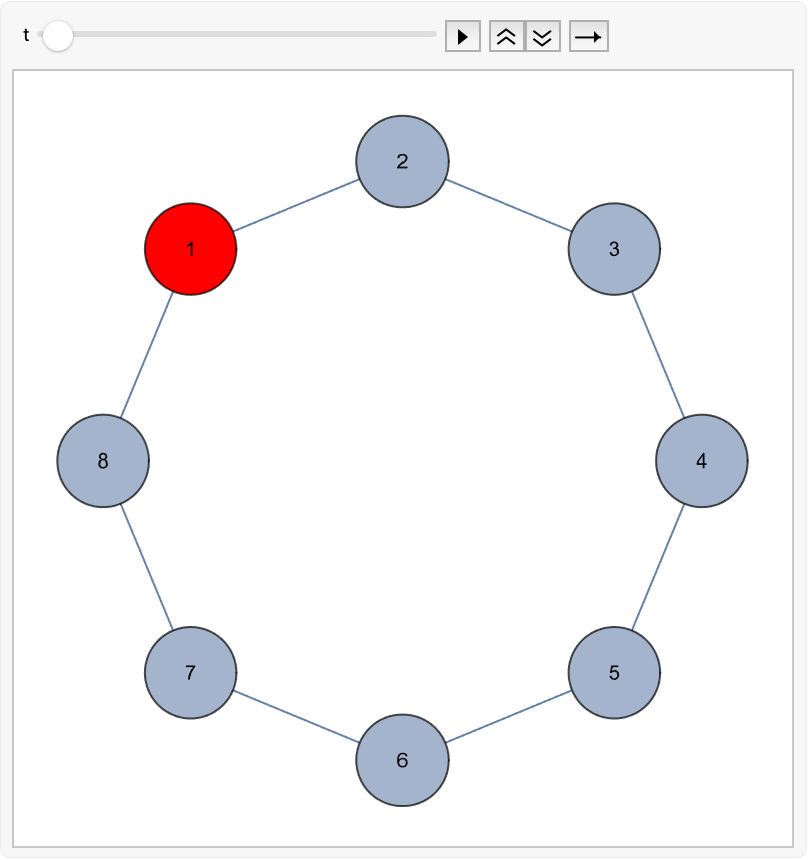

![Animate[
Graph[PetersenGraph[5, 2], VertexStyle -> {Which @@ Join @@ MapApply[{t >= #1, #2} &, Reverse@%] -> Red}, VertexSize -> Large, VertexLabels -> Placed[Automatic, Center], EdgeLabels -> None],
{t, %[[1, 1]], %[[-1, 1]]},
AnimationRunning -> False
]](https://www.wolframcloud.com/obj/resourcesystem/images/aff/aff26f96-c2e2-442f-9138-b118daab335b/0842452abcfc4980.png)
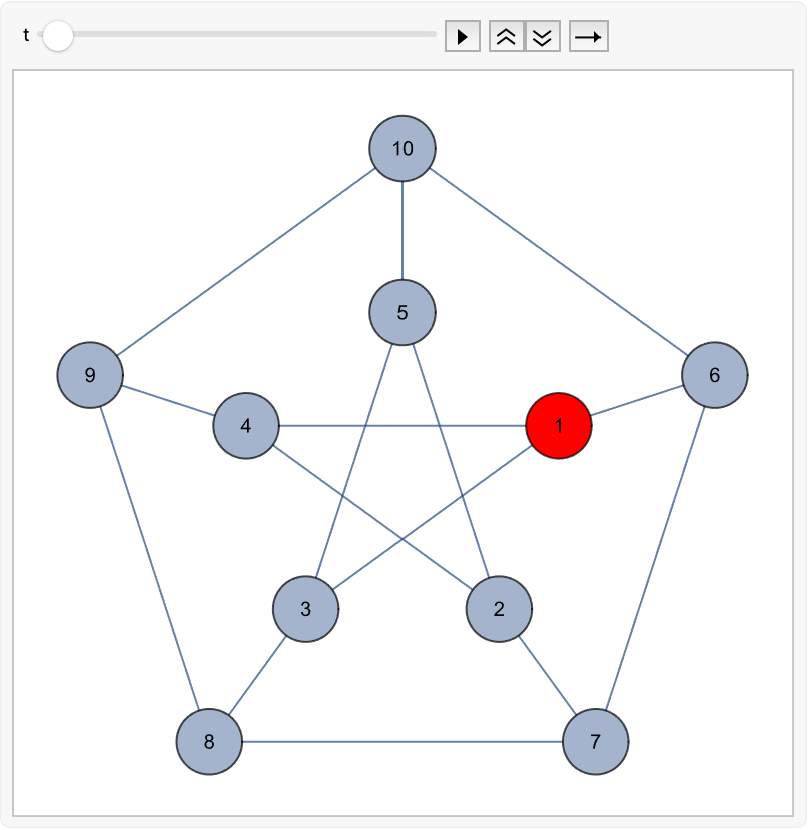
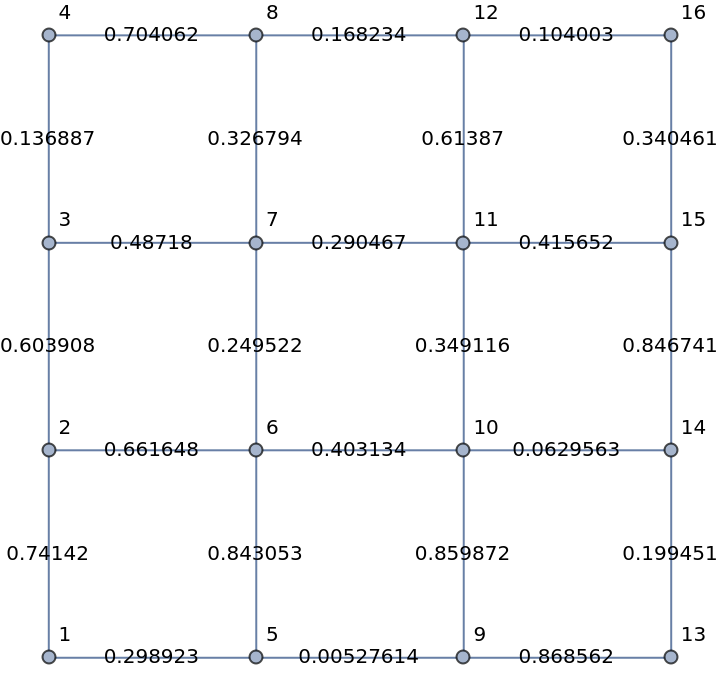
![Animate[
Graph[gg, VertexStyle -> {Which @@ Join @@ MapApply[{t >= #1, #2} &, Reverse@discreteWalk1] -> Red},
VertexSize -> Large, VertexLabels -> Placed[Automatic, Center], EdgeLabels -> None],
{t, discreteWalk1[[1, 1]], discreteWalk1[[-1, 1]]},
AnimationRunning -> False
]](https://www.wolframcloud.com/obj/resourcesystem/images/aff/aff26f96-c2e2-442f-9138-b118daab335b/6394b856cec358fd.png)
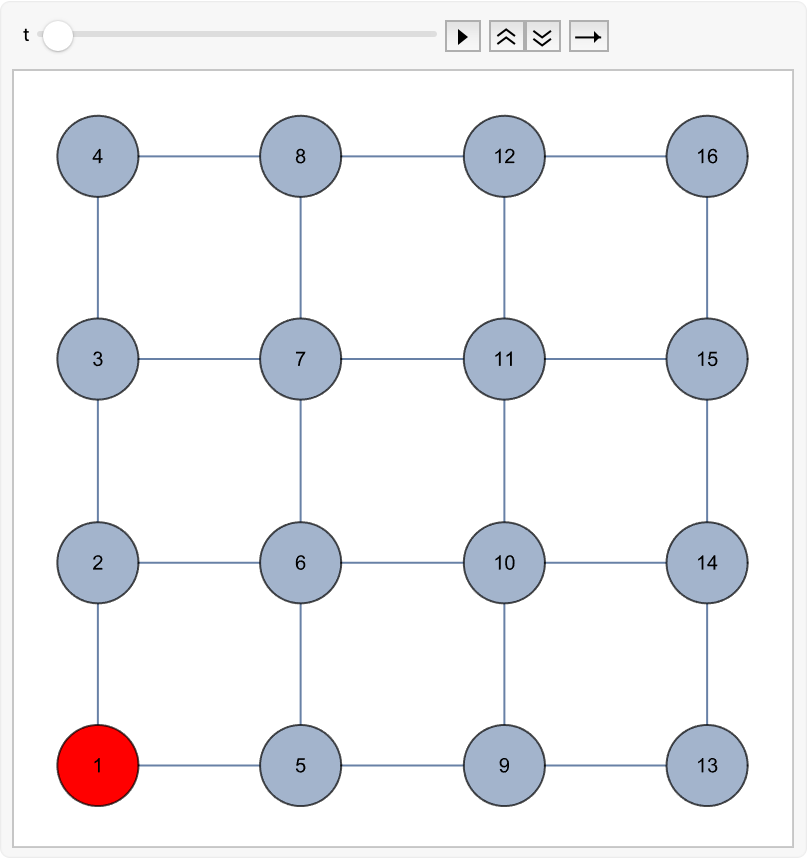
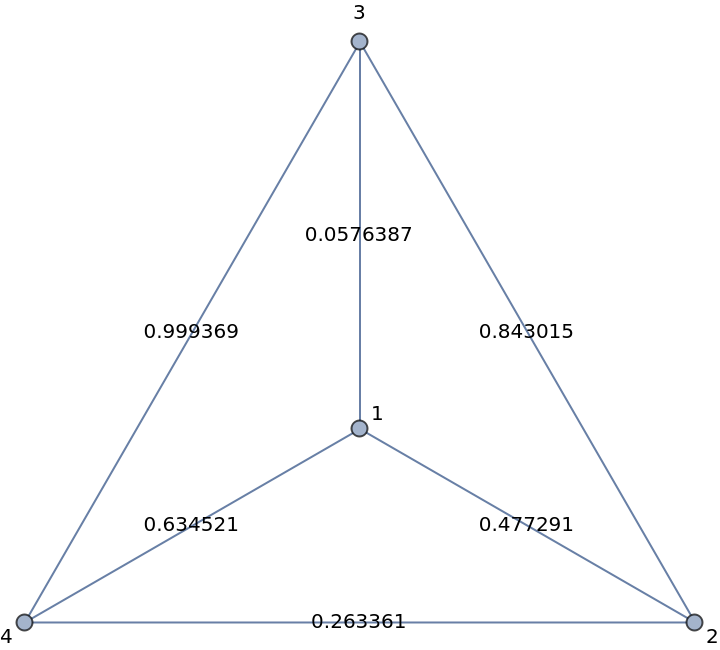
![Animate[
Graph[cg, VertexStyle -> {Which @@ Join @@ MapApply[{t >= #1, #2} &, Reverse@continuousWalk1] -> Red}, VertexSize -> Large, VertexLabels -> Placed[Automatic, Center], EdgeLabels -> None],
{t, continuousWalk1[[1, 1]], continuousWalk1[[-1, 1]]},
AnimationRunning -> False
]](https://www.wolframcloud.com/obj/resourcesystem/images/aff/aff26f96-c2e2-442f-9138-b118daab335b/750a99cff01fcbe4.png)
